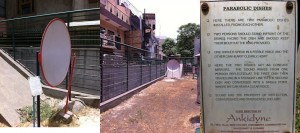 Today, I finished reading Malcolm Gladwell’s Outliers, a book that tries to ascertain the various external factors that help facilitate the possibility of great success. The book as a whole was good, but I found it particularly interesting that in one chapter, the author characterizes American education as a system that places great importance on the separation of work and play, citing the widespread cultural attitude that too much mental stimulation can lead to stagnation and actual digression. Now, on the surface, this seems like a sensible idea to vibe with. You know, the whole “all work and no play” philosophy.
Today, I finished reading Malcolm Gladwell’s Outliers, a book that tries to ascertain the various external factors that help facilitate the possibility of great success. The book as a whole was good, but I found it particularly interesting that in one chapter, the author characterizes American education as a system that places great importance on the separation of work and play, citing the widespread cultural attitude that too much mental stimulation can lead to stagnation and actual digression. Now, on the surface, this seems like a sensible idea to vibe with. You know, the whole “all work and no play” philosophy.
However, what exactly constitutes “play”?
In the U.S., when I think about a playground, several common images immediately come to mind: merry-go-round, swings, jungle gyms, those weird steel bubbles kids used to hang on upside-down and do flips off of. These things come to mind because in America, playgrounds are meant as a welcome reprieve from the intellectual workload of school through exhaustive physical fun in the forms of monkey bars and slides; a place that symbolizes the American separation of learning and recreation with very clear-cut boundaries. Now, I’m definitely a byproduct of the American public education system in that I’ve learned the affiliation of the rooms with the desks and books and lessons as the workplace, which leaves everything outside those walls as a means to escape from that work and do what kids are supposed to do: play. Not to say that I wasn’t intellectually stimulated through class field trips to see things like the science museum or theatrical productions, but even those were far removed from the classroom, solidifying the idea that play is basically anything that’s not school, work or learning. I am not saying this is the only way to look at it, but it is something I happen to find true.
However, does that same definition apply in India?
Today, I visited the school where I am going to start teaching in a week. It was not the first time I went there, but it is definitely the first time I went there thinking about this particular question. Now, kids of all age groups in India grow up playing a lot like kids in America, but they just subtract all the playground equipment and due to monetary constraints, place twice the emphasis on organized sports. Since birth, most children are raised on soccer and cricket, two popular “world” sports, as opposed to Americanized sports like baseball, basketball, and football. However, like their American counterparts, they use the games to alleviate the stress of working in the classroom.
At least that is what I thought until I saw something extraordinary.
Since the two most popular sports played at this K-12 school are mostly aggressive contact sports, the bigger, older kids take up the available space to play them. So where do the younger kids go? What exactly do kids from 5-10 years old do while the bigger kids are all out in the front of the school on the basketball and soccer courts (both concrete, since I don’t think there’s a school in India can afford a grass pitch)? In the very back of the school’s Primary Wing, there is a small elevated area with the surface area of a small apartment. In it, there are no jungle gyms or monkey bars, no slides or bubbles; instead, it has interactive displays like those found in a science museum—each with a sign explaining how to use it and what to learn from it. The displays include:
- A life-size model of DNA

- A working model of a lifting screw
- A pair of parabolic dishes (pictured)
- A miniature hydroelectric power plant
- And a 3-part model of inclined planes
Now, this might not be the most aesthetically pleasing recreational area to someone who grew up with the decency of American parks and playgrounds. Nor does it in any way work with the American definition of “play,” which itself says a lot about the Indian connection between work and play. This small pitch of land is a statement that schools can intentionally blur the line between learning and recreation to reduce students’ aversion to critical thinking by integrating learning into their play. I am not saying that playgrounds like this are a widespread phenomenon, and I am certainly not saying that all the children take advantage of this particular area, but the whole idea of this integration definitely suggests a very different paradigm for the Indian connection between school and play, learning and recreation. Specifically, that there is no connection; they are the same thing. To generalize, in the Western world, life exists in a compartmentalized fashion. However, in India and other Eastern cultures, life is promoted as holistically as possible.
I guess it is a lot harder for kids to develop aversions to learning when presented with opportunities like this for recess.